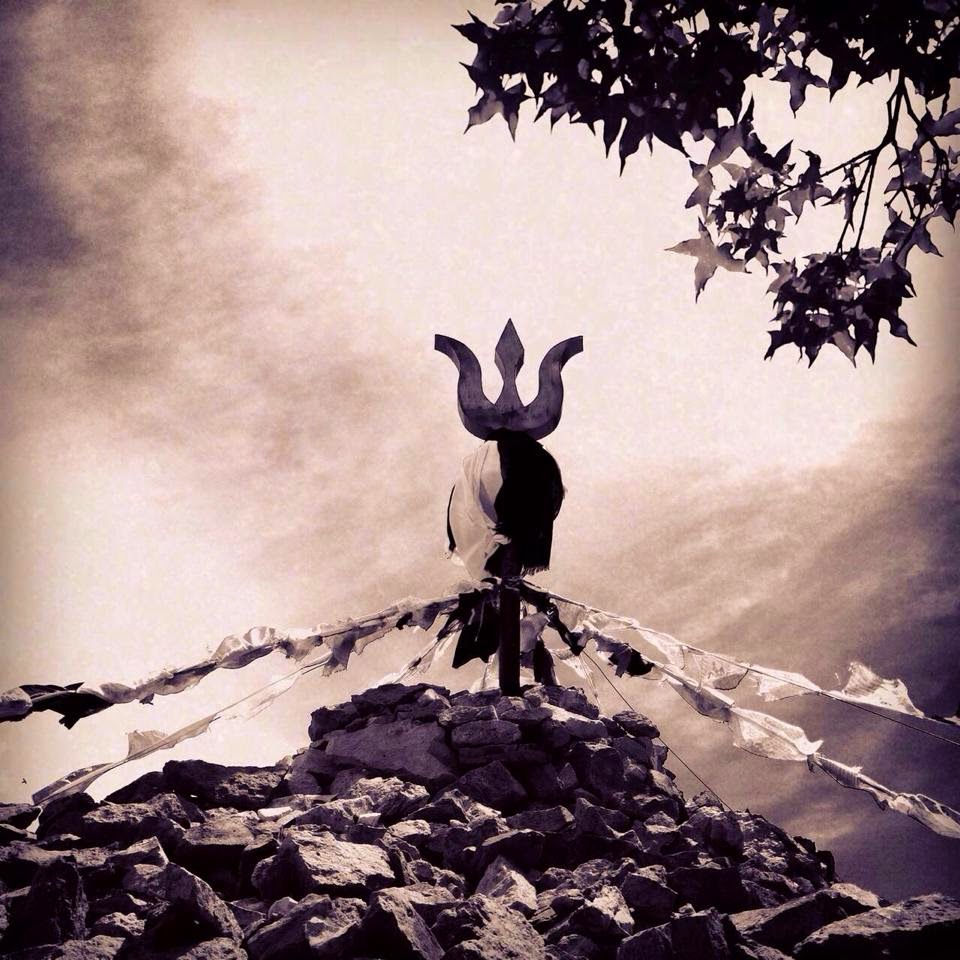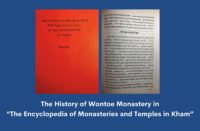
High Peaks Pure Earth has translated a blogpost by Woeser written in August 2014 for the Tibetan service of Radio Free Asia and published on her blog on August 23, 2014.
This post follows on from “A Black Car without a License Plate” about Woeser’s travels in Inner Mongolia.
“Mongolians and Chinese are One Family”
By Woeser
After noticing the black vehicle without a license plate following us, I began to be on alert. It is true, Inner Mongolia also suffers from ethnic problems, but we three were not Mongolians, we were just ordinary travellers, we should not have been followed by police. Of course, this kind of shadowing was nothing compared to what we usually experience in Tibet.
I had already been to a few places in Inner Mongolia, like Ejin Banner, Alxa League or Ordos. This time, our plan was to travel through the entire region in around 20 days. Wang Lixiong had bought a map of Inner Mongolia in a bookshop in Erlianhaote and had also brought along the book “The Empire of the the Blue Wolf: Genghis Khan and the Formation of the Modern World” by the German historian and anthropologist Joachim Barckhausen. Before leaving, we also got hold of the audio-book “Genocide on the Mongolian Steppe” by ng ng Haiying, a Professor for Mongolian Studies at Shizuoka University, Japan. We drove past the area that is now called “Hinggan League”, it started to be cultivated by migrants many years ago and is now one vast field of maize. We were listening to Yang Haiying’s book in the car, from his research into several decades of tragic Mongolian history, we learn that the CCP’s “ethnic policies” in Inner Mongolia have not been in any way different from colonial governance: first comes migration, second the oppression of the indigenous population.
The second time that I encountered an abnormal situation was when we left the county seat Xanggin Xoit Khoshuu where Chinese far outnumbered Mongolians; we were stopped by police and accused of jumping a traffic light. They noted down Wang Wo’s driver’s license, but did not fine us, only asked where we were going and then let us go. We guessed that this was to keep track of our journey.
On the way we stopped to eat earthenware pot noodles at a small town called Jilantai. When Wang Lixiong, as he was eating his noodles, asked, “How are the inter-ethnic relationships around here?” we could not hide our amusement. The Chinese boss of this eatery that was offering various kinds of dishes in earthenware pots, answered quickly: “Mongolians and Chinese are one family.” Then he stopped and continued: “We are all inseparable”. This big and serious question must have made him think that Wang Lixiong was some official from “above” sent down here to look into how common people are doing and what they are thinking; so this politically correct answer must have been a natural reflex.

At noon on the second day we arrived at Alxa League, and we went to eat noodles again. At a small restaurant selling beef hand-pulled noodles, a Chinese farmer and environmentalist who had been introduced to us by a friend rushed in. Wang Lixiong began chatting with him, just some ordinary talk about the past and the present.
This Chinese farmer from Mingqin (Gansu province) had a very strong hometown accent. He said that 70% of people coming here were from Mingqin. Not many in the past. But in the early 1960s, during the great famine, family after family from Mingqin migrated here. The Mongolians offered shelter. His voice was full of gratitude when he said: “The Mongolians gave us food and accommodation, even land. But as more and more Chinese moved in, their grasslands have become increasingly occupied. What if Mongolians wanted to escape from here, I am sure Chinese would not only not give up any land, they wouldn’t even give them food.”
At that moment, I noticed that man sitting next to us, he looked very much like one of those pursuers that I am so familiar with. Dark clothes, crew cut, carrying a messenger bag. But of course it was not simply his appearance, I could tell from the sinister expression on his face that he was a typical “shadow”.
We immediately got up to leave, we did not want to cause this Chinese farmer any trouble. In the rearview mirror I saw the pursuer also getting up, rushing into his car. And this time it was not simply one car following us, there were three. But we managed to film them.
August 2014





Follow Us!